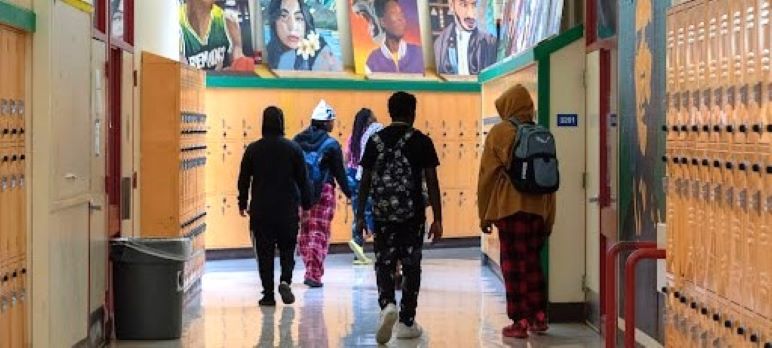California K-12 schools got a reprieve today when a judge blocked President Donald Trump’s order to eliminate school diversity programs nationwide or risk losing federal funding.
New Hampshire Judge Landya McCafferty said Trump’s order didn’t sufficiently define diversity, equity and inclusion, or DEI, limited free speech and went beyond his authority. The Trump administration is likely to appeal the ruling, but for now it means that the federal government must continue to fund special education, after-school programs, services for low-income students and other federal programs.
The ruling stemmed from a lawsuit brought by the American Civil Liberties Union and the National Education Association, the country’s largest teachers union. They alleged that Trump’s DEI order was overly vague and would cause undue harm to students. California had responded to the order by saying its schools were already in compliance with civil rights laws.
California joined about a dozen states in pushing back against the order. Separately, the Trump administration said it would withhold federal K-12 money to Maine over its protections for transgender students, and is investigating California over the same issue.
McCafferty’s ruling only applied to schools that have at least one staff person who belongs to the National Education Association, which is nearly all schools in California.
Politics and Title I
California receives $2.4 billion in federal Title I money for low-income schools, about $1.3 billion for special education, $250 million for after-school programs, and millions more in grants for career education, school meals and other programs.
The Trump administration said they didn’t intend to cut special education funding, but Title I and other programs were potentially at risk. In the current wobbly economic climate, it’s doubtful that the state would be able to backfill the lost revenue, and those programs would almost certainly face steep cuts if not total elimination.
Trump is not the first president to threaten to withhold Title I funds, the largest piece of federal K-12 money. Not long after Congress created Title I in 1965, President Lyndon Johnson threatened to withhold it from schools in the South that refused to desegregate.
Other presidents have occasionally threatened to withhold federal funds to schools, although none have actually done it, said Sarah Reber, a senior fellow in economics policy at the Brookings Institution.
“It’s not unusual to have Title I get caught up in controversies, but it’s never over the value of Title I itself,” Reber said. “It’s usually over a broader political issue.”
Nearly every district in California gets some Title I funding, which schools use to hire tutors and aides, reduce class sizes, and purchase books and other materials. The government requires that schools use the money to help low-income students, who typically don’t perform as well academically as their peers.
The money goes from the federal government to the state to school districts, which distribute it to schools that have a certain percentage of low-income students. The amount of money has mostly been stable year to year, although during the pandemic the government gave schools billions more money in COVID relief grants based on the Title I formula.
Losing Title I money now would be especially difficult for schools as their emergency pandemic grants are expiring and states are experiencing budget uncertainties, Reber said.
After-school and summer programs
Another significant portion of federal K-12 funding is the 21st Century Community Learning Centers, which funds after-school and summer programs. In California, the money supplements the state’s contributions to those programs and is the only source of funding for high school after-school programs, such as student government or homework help.
“Without 21st Century grants, those programs would be wiped out,” said Heather Williams, director of policy and outreach for the California AfterSchool Network.
Until 2006, federal funding was the primary source of support for after-school programs, and offerings were scant. But Gov. Arnold Schwarzenegger and Gov. Gavin Newsom both championed the potential for after-school programming as a safe place where children could get healthy snacks, tutoring and a gamut of enrichment activities. During the pandemic, California created the Expanded Learning Opportunities Programming, which last year distributed $4 billion to elementary schools.
Although after-school programs have garnered bipartisan support, Williams is wary of the current administration. During Trump’s first term, he tried to cut 21st Century grants all four years, but was thwarted by Congress.
“We’ve known for a long time that after school programs are important,” Williams said. “But right now it seems people are caught up in a broader political argument that overlooks the value of actual programs.”
Carolyn Jones is a reporter with CalMatters.

